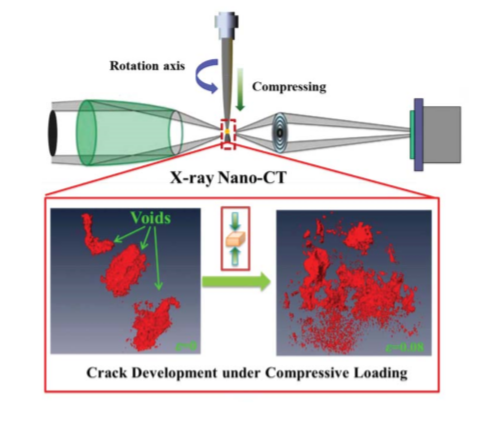Our team of engineers Chen Liang, Wu Lihui, and Chen Wei, associate researchers, and others recently published a paper in the JOURNAL OF SYNCHROTRON RADIATION “In situ observation of void evolution in 1,3,5-triamino-2,4,6-trinitrobenzene under compression by synchrotron radiation X-ray nano-computed tomography”.
This work used X-ray nanocomputer tomography to characterize in situ the formation and development of voids in compressed 1,3,5-triamino2,4,6-trinitrobenzene. Benefiting from high spatial resolution (30 nm) and excellent imaging contrast, X-ray nanocomputer tomography images show a small part of the uneven structure in the original crystal (volume ratio of 1.2%). This inhomogeneity acts as a nucleation of voids, resulting in stress concentration during compression, which causes the voids to continue to grow under load. At the same time, the results further show that the pores being developed are not isotropic: pores with higher surface roughness and irregular structures are more likely to break and form new micropores. Compared with the original structure, these new voids with a higher irregular structure are weaker and more easily divided into smaller voids, resulting in the formation of voids along these weak areas and eventually large voids. Experiments allow direct investigation of the formation and development of voids, which helps to study the mechanisms of void development and degradation of high-energy materials during manufacturing and transportation.



